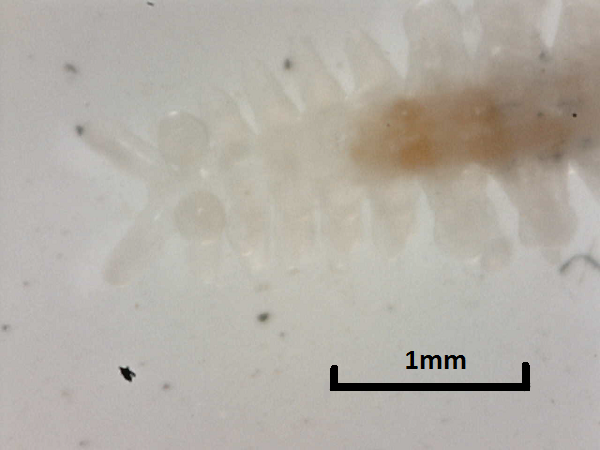Behaviour
Clibanarius longitarus can have an array of symbiotic relationships with other organisms. They may form obligate, facultative and incidental associations, and can range from being mutualistic, commensal or parasitic. In fact, the investigation that was done on Clibanarius longitarus (see under the title Morphology: Investigation) found numerous small barnacles attached to the shells, and a small polychete in the gill lamellae, (see Figure 22.) The barnacles are commensal to the hermit crab, having a neutral affect on it, and it is unknown what kind of relationship the polychete found in the gills had with its host, (Tudge, Asakura & Ahyong, 2004.)

Figure 22- A small polychete found in the gill lamellae of a Blue striped hermit crab. (Source: Author, 2014)
Hermit crab predators are usually birds, fish, octopus, and brachyuran crabs. Their larvae are prey for a wide range invertebrates and vertebrates, (Tudge, Asakura & Ahyong, 2004.)
Socially, hermit crabs are known to have aggressive tendencies when it comes to guarding territories, or competing for a good shell or the right to mate with a female. On their own, hermit crabs often have elaborate shell assessment rituals where they check the size, contents and quality of a potential new shelter, (Tudge, Asakura & Ahyong, 2004.) |